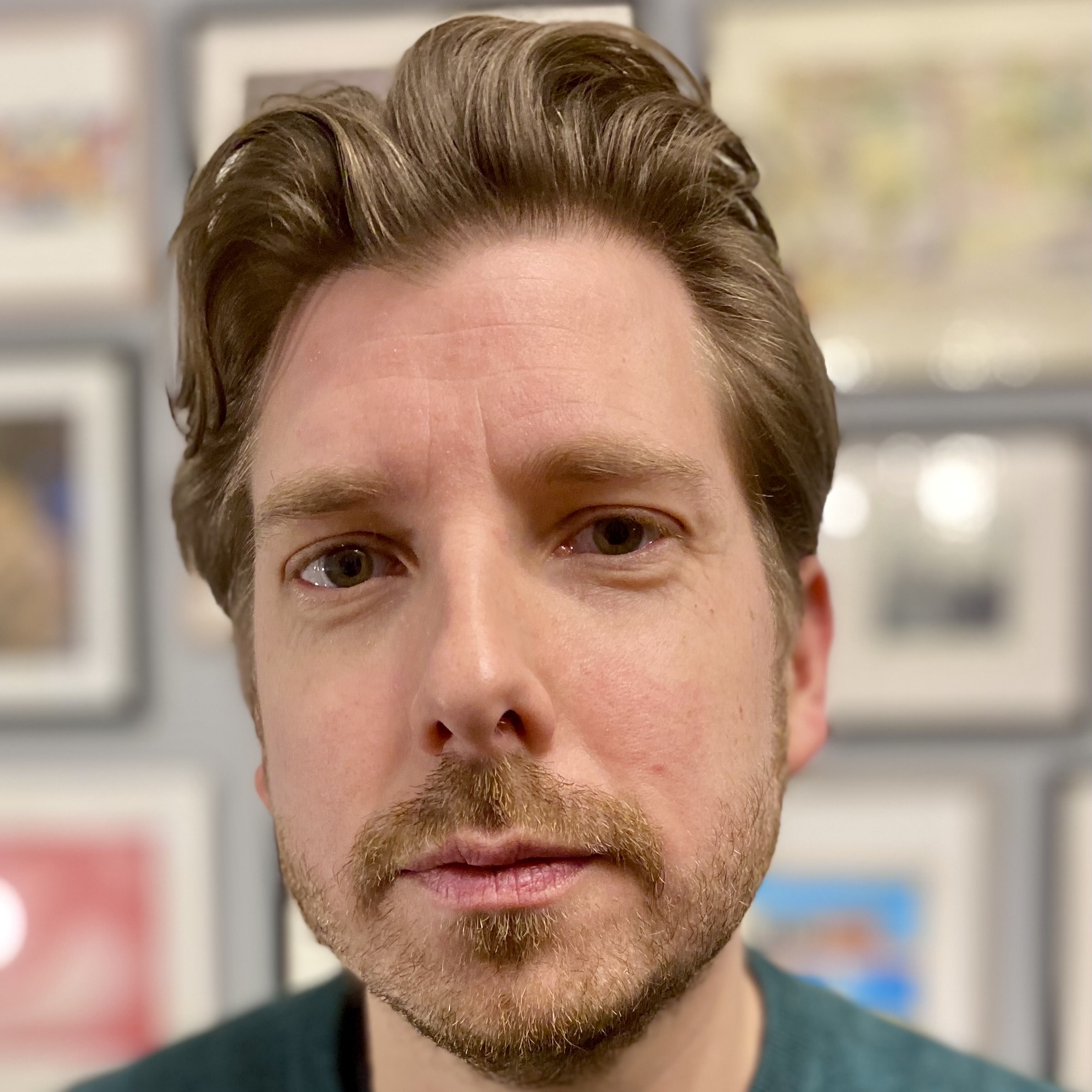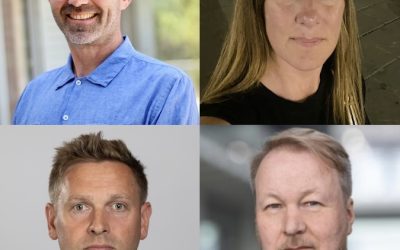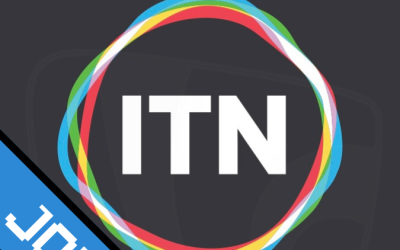Future Studios, a division of Future PLC, has emerged as one of the leading content creation businesses in the digital-first arena. Formed following the £23.5m acquisition of Barcroft Media in 2019, it produces high volumes of content for social platforms, TV and the digital editions of its parent group’s magazine portfolio. Examples of its work include Marie Claire’s On The Record, Glow Up Your Grades and Unbelievable Me.
This week Future Studios chief creative officer John Farrar talks to The Drop about the studio’s business model and where he sees opportunities for growth. With social platforms shutting down their originals programmes, he explains how the company’s flywheel approach enables it to adapt content in line with emerging opportunities in both digital and TV media. Farrar also shares his thoughts on the collapse of Vice and Buzzfeed; and explains why Future targets noisy ideas over influencer alliances.
Can you start by telling us how Future Studios’ activities break down?
JF: Future Studios started life as Barcroft Studios. Barcroft was, essentially, a digital first AVOD business with a bit of TV on the side. Then it joined Future and was rebranded and repositioned. Today there are three core pillars. Firstly, there’s an AVOD business that produces 7-8 films every week for platforms like Snapchat, Facebook, YouTube. These are presented via our social channel Truly and focus on amazing true stories. This could be anything from triumph over adversity to medical mysteries to extraordinary relationships – and that’s all under our AVOD pillar.
The next pillar is what we call our O&O business (owned and operated), which is all the onsite video we make for Future PLC brands. Future has around 250 brands ranging from Tom’s Guide to Marie Claire to Wallpaper, and we produce onsite video for the digital versions of those magazines. That pillar is primarily monetised by a sales team which is out there selling pre-roll advertising in front of each video.
The third pillar is what we call external, which is essentially TV. So that might be a commission for Channel 4.0 or ITV X, for example. This is typically factual formats, specialist factual, true crime etc and comes to around 30 hours of TV every year.
And presumably there is some overlap between them?
JF: Precisely. We see the business as a kind of flywheel, where we seek to create content that sits across all of the pillars and can be monetised accordingly. So a couple of examples would be GamesMaster, and a project we did with Marie Claire. In the latter case, we commissioned a short form digital series called On The Record that initially lived on Marie Claire. Then we use all of that material to create a kind of true crime box set series. We also sold the scripted rights to the project. Not every idea sits across all three pillars, but that’s what we’re trying to do. We have another show called Unbelievable Me, which turned our AVOD content into a linear TV show for Discovery.
Where does the initial impetus for ideas come from?
JF: It usually starts in one of two places. Firstly, our centralised development team, which sits across all the different divisions. So they might be creating a new strand for AVOD channels, or they might be developing a premium doc series for Netflix. An idea might start with a strategic thought or an opportunistic thought. Either way, it’s about seeing something incredible and thinking – how to we capitalise on it? Secondly, ideas can come from our AVOD casting teams. They are out there looking for talent all the time – and often that means they can direct an idea back to me or the development team if it looks like there is a bigger thought or trend going on.
The point is that it is a very fluid model, where the goal is to create opportunities for stories, casting and IP. The bit that has been so successful has been the integration between Barcroft and Future – because Future’s journalists are generating a huge amount of IP every week, and that content gets surfaced to Future Studios. So at the moment we’re doing a really big pitch with Wallpaper that involves conversations with agency CAA and A List Hollywood talent. There are just so many levers to pull.
Can you tell us about the composition of your team?
JF: There are 85 of us, rising by 30 or 40 when we are very busy with production. In terms of leadership, there is a VP of content strategy (Al Brown) alongside me, who looks at where the opportunities are. As I said earlier, our development team sits at the heart of the operation – because the lifeblood of this business is ideas that can be turned into properties. The job of turning those ideas into compelling content is down to our producers and casters – with the latter also helping unearth idea. In addition, we have in-house editors to give the content a certain house style and feel; and we’ve got TV executives pitching to TV channels and platforms. There’s also a big production management team making sure the work is delivered to standard, and a commercial team that’s out there selling the pre-roll advertising. So we’re a big operation.
How do the three pillars compare in commercial importance?
JF: At the moment, AVOD and external are about the same, but the O&O revenue is significantly higher. So I think the direction of travel for us in the next few years is maximising what we’re doing with the brands, doing more onsite video doing, more premium content. The thing we talk about a lot is making our brands famous. Going forward, a big part of our thinking will be: ‘What more can we do with Tom’s Guide? What more can we do with Tech Radar? Or Wallpaper? Or Marie Claire?’
The magazine/O&O business presumably comes with a subscription business attached, but is that also a viable revenue model for the digital-first content?
JF: In terms of digital-first content, there were some experiments with paywalls before I arrived, but it didn’t really work out and it’s not something we would do now – so the core of the business is still ad revenue. We’ve experimented with FAST but that hasn’t really worked out yet. It might do in the future, but for now that audience seems to be looking for a very particular type of content. I can see that it makes sense for the likes of Fremantle, with Got Talent reruns, or AMC and The Walking Dead. If you’re trying to compete in that space you need content that the audience recognises immediately.
What about brand extensions? Digital first networks and creators are always talking about their plans to launch products. Is that an option for Future?
JF: It’s not within my remit, but as a group I’m sure we’ll do more in the commerce space. Future owns a successful fashion/lifestyle platform called Who What Wear (acquired in 2022), which opens up the potential to explore shoppable video. There’s a lot of learnings we could derive from each other. Also worth mentioning is that Future has a big live events team, which complements the magazine and digital media businesses. An example is the Future Games Show, which is coming up on June 10.
Coming back to content, can you give us a few more examples of shows/videos/IP that you have originated out of the AVOD model?
JF: One is Ridiculous Rides, a successful AVOD brand that became a 40-part series for A+E. To do that, we took our AVOD content, commissioned some additional assets, brought in a host etc. Unbelievable Me is another example of a TV series (for Warner Bros Discovery) that came out of an online franchise called Born Different.
You’ve also been promoting Glow Up Your Grades, a digital-first series that sets out to help UK students with their English GCSE exams.
JF: Glow Up Your Grades is a piece of content that emerged from something Al Brown (VP, content strategy) was working on. It started with the premise – if Future is the place that people come to learn about the world, what would our version of Masterclass look like? We saw an opportunity in younger education, and started talking to teacher/presenter Mehreen Baig, whose own ideas very much aligned with Future’s values. The result was Glow Up Your Grades. It was a bit of an experiment, but we’re thrilled with the results. So now it’s all about how we build it as a brand, and how we continue to work with Mehreen around education. What we like about this area is that we can expand it, and it is evergreen – because there are always new students.
This is something we see as strategic, a project that will evolve over a long period of time. But a lot of what we do in AVOD is also about quick wins – generating lots of impressions so that we can get a return on investment from advertising.
How do you relate to creator talent? Are alliances with established creators and influencers important – or are you a kind of parallel business model?
JF: We know a lot of top creators and have good relationships with them. Sometimes that is important. For example, Channel 4.0 is interested in high-profile talent, so when we work with them, we’d be looking for those partnerships. Sometimes it makes sense for the project – as with Mehreen and Glow Up Your Grades. We also worked with the rapper Aitch on a recent Snapchat commission. Having said that, what often works brilliantly for us in AVOD, by design, is stories that are loud enough that they don’t need a presenter or influencer. So I’d say, unlike the way influencers collaborate with each other, we don’t do a huge amount with them. I know some companies are talent-led, but we are driven by an idea or a market opportunity. If we need talent, that’s part of a packaging conversation we might have later with their agents.
You mentioned a Snap Commission in there. That model has pretty much gone away now, hasn’t it, with Facebook Watch and YouTube Originals also ending.
JF: Yes, we had a really good run with the Snap originals team for about three years: series like Mind Yourself, which was about mental health. It’s a real shame that team shuttered because they were excellent. But we still work with Snap as a platform.
Digital-first studios often focus their energies on TikTok, YouTube, Snapchat and Facebook/Insta. In your day to day business, do you look at other platforms.
JF: Right now, we don’t have a big strategic focus on them – but we monitor them. We know the guys at Pinterest, and I definitely see alignment there with some of our lifestyle brands. An in the past we’ve done a number of pitches with Twitch. But right now, with the tectonic plates shifting so much, what we have to do is focus on the core business, the core clients, the relationships that we know deliver for both sides.
Digital-first creators hate being thought of as a nursery slope for TV – but Future seems to have a greater inter-connectedness than most. Is that fair?
JF: Yes, and a lot the credit for that goes to Sam Barcroft. His early model was to build noisy, newsworthy AVOD assets that could be repurposed for TV. I come from a TV background and I’m excited by the big TV opportunities in documentaries or formats. So what I’ve done built a model on the tracks laid by Sam.
In five years, might we be saying you created a MasterChef or a Survivor from a digital first starting point? Could you see that as a genuine possibility?
JF: Absolutely. We’re not huge in branded content or working with influencers, but I think Future’s superpower is the ability to identify incredible stories, and develop them exceptionally well. If we keep getting that right there are opportunities for us across online and TV platforms. The key would be for us to develop an idea in social that has the potential to be turned into something much bigger. Digital first is an amazing sandpit so I wouldn’t rule it out. What might be harder for us is to manage the entire process by ourselves, so possibly it would need to be as a kind of partnership. It’s interesting that you cite Survivor, because I worked for the formats creator Charlie Parsons at a previous company. I remember him telling us that Survivor started as a strand in a programme – and then he realised it had the potential to be a big show.
What big trends have impacted on you in the last year?
JF: The changing landscape around Snap has been a challenge for us. We were one of the very first to get onto that platform, and did very well in terms of impressions and revenue. But as the Snap model evolved, and originals ended, that part of the business got harder. But this business is constantly changing, so you have to adapt. You have to find the white space, and seize the opportunities. Recently, for example, we made a premium travel series for a cryptocurrency platform. So you have to be ready for opportunities when they emerge, and have the agility to respond quickly.
What do you make of the problems experienced by Vice and Buzzfeed? Are there any lessons digital-first studios can draw from their struggles?
JF: My take would be that they both heavily invested in news, seeing it as a brand builder, in an environment where news is incredibly hard to monetise and has to be subsidised by other revenue streams. And in the case of Vice and Buzzfeed those other revenue streams broke down over time. The fact that Google and Facebook took a bigger and bigger slice of the advertising money meant scale was worth a lot less and other attempts to diversify income, such as Viceland, never quite took off. It’s a great shame, because they are pioneering brands that I grew up loving. The stories and the journalism had a real point of view and a real attitude.
Future by numbers
Future says it is one of the most viewed media groups in the UK, with over 120 million followers and over 500 million views a month on social media.
The company’s O&O business garners 1.6bn video views annually across all verticals.




